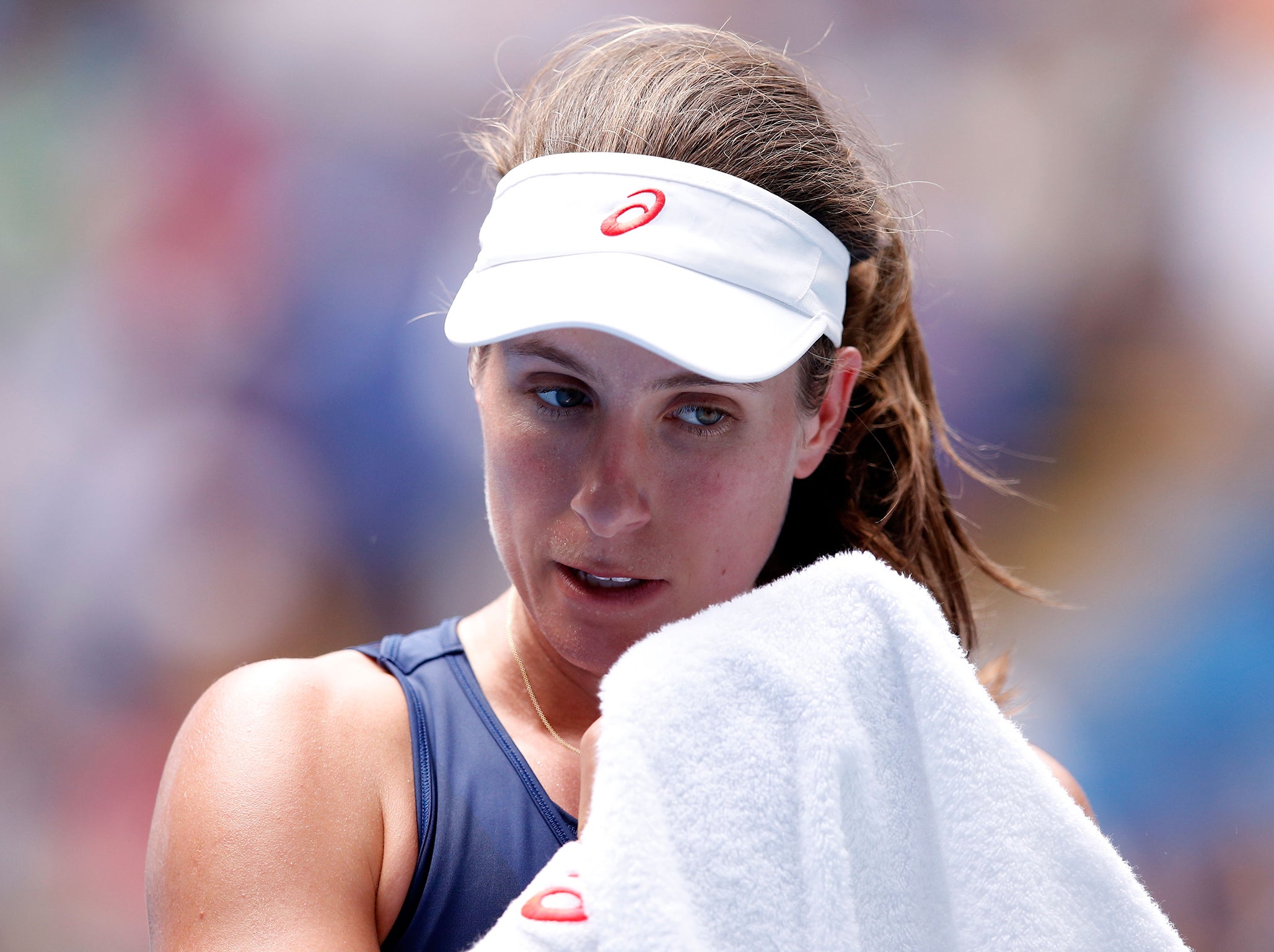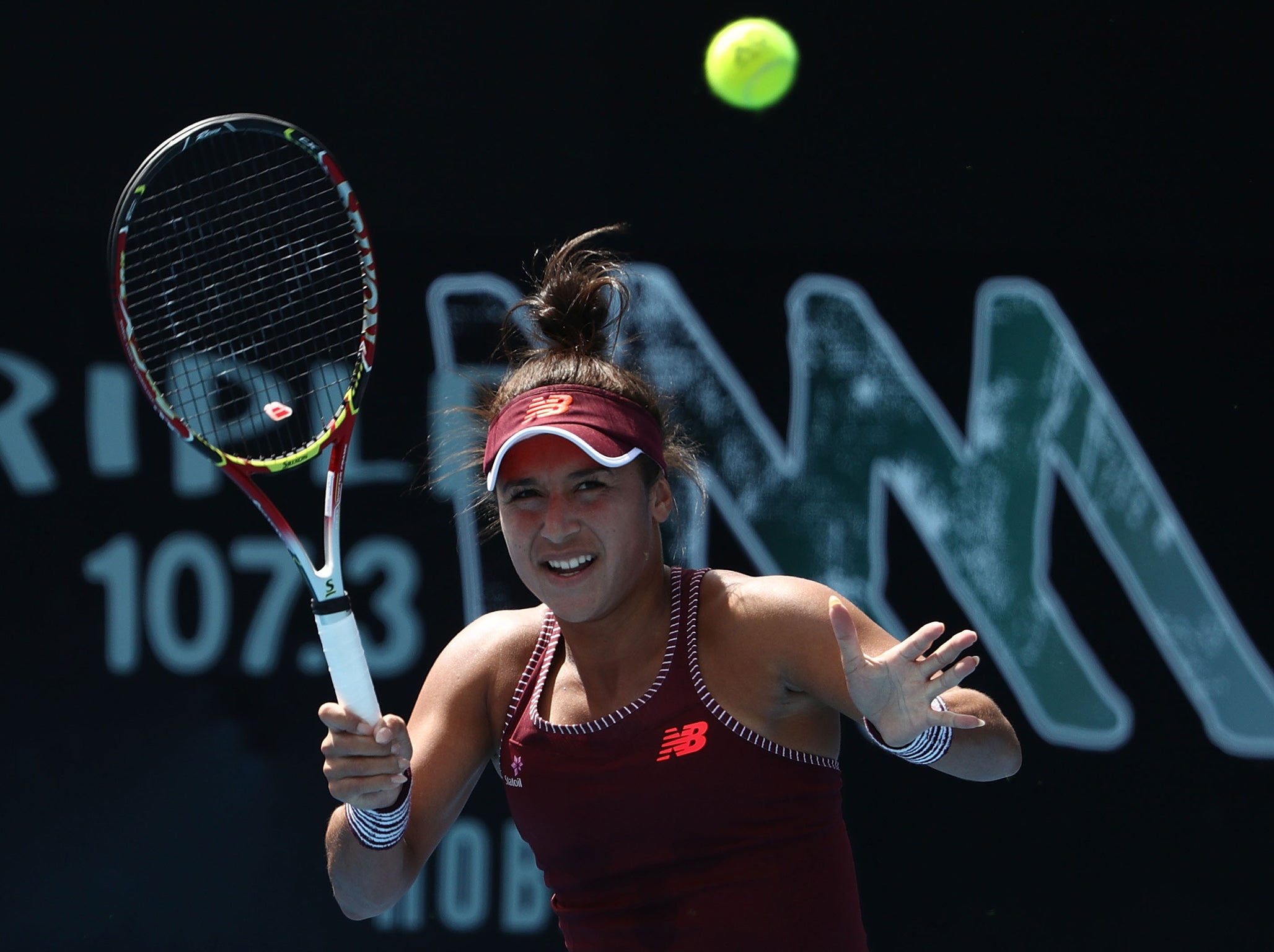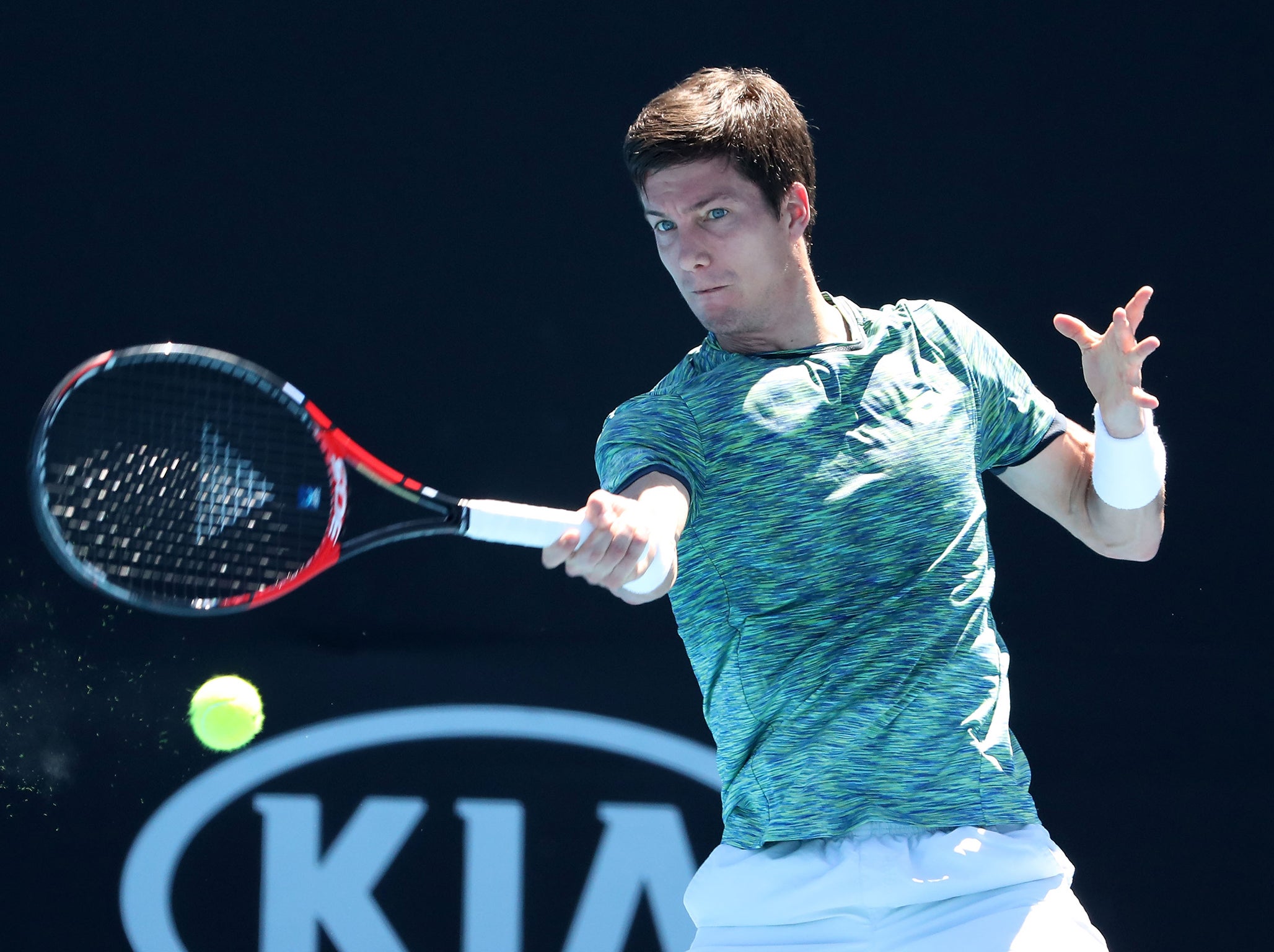Australian Open 2018: Tough draws for Johanna Konta and other Brits suggests difficult fortnight ahead
Thanks to the exploits of Andy Murray British hopes have usually been high going into the Australian Open, but Thursday's draw suggests a tough fortnight is in store

Thanks largely to the exploits of Andy Murray British hopes have usually been high going into the Australian Open, but today’s draw for the year’s opening Grand Slam event, which begins on Monday, suggests that a difficult fortnight might be ahead.
Unless Naomi Broady wins two more matches in qualifying, there will be only three British players in the main draw of the two singles events, with form and world rankings suggesting that Johanna Konta might be flying the flag on her own after the first round.
Kyle Edmund, the only Briton in the men’s singles, faces a first-round meeting with Kevin Anderson, who was runner-up at the US Open last summer, while Heather Watson will play Kazakhstan’s Yulia Putintseva, who as the world No 50 is ranked 24 places higher than the British No 2.
Even Konta’s progress beyond the first round is by no means guaranteed. While her opponent, Madison Brengle, is ranked 83 places lower than her at No 92, the American has won three of their previous four meetings. However, Konta won their most recent encounter, at Indian Wells two years ago, for the loss of only four games.
Konta or Brengle will face either a qualifier or Russia’s Margarita Gasparyan in the second round, while the Czech Republic’s Barbora Strycova is a potential third-round opponent. The world No 21 won her only previous meeting with Konta in Tokyo last year.
If Konta were to go all the way to the final – which is by no means fanciful given that the Briton made the quarter-finals and semi-finals in 2016 and 2017 before losing to the eventual champions Angelique Kerber and Serena Williams – the Briton might face former or current world No 1s in her last four matches.
Karolina Pliskova, who topped the world rankings last summer, is a potential fourth-round opponent, after which Konta could face Simona Halep, the current world No 1. Halep, who has lost in the first round on four of her seven appearances here and has never gone beyond the last eight, lost to Konta in the quarter-finals at Wimbledon last summer.
Garbine Muguruza, who briefly led the world rankings after last year’s US Open, is a potential semi-final opponent for Konta, but the Wimbledon champion has not started the year well and retired early from her first two tournaments of the campaign because of injury. Konta also retired hurt in her Brisbane quarter-final against Elina Svitolina last week but appears to have subsequently recovered her fitness.
If Konta was to make the final from the top half of the draw her opponent could be Caroline Wozniacki, who last topped the world rankings six years ago but is back at No 2 after enjoying an excellent year in 2017. Konta won both their previous meetings, in the third round here 12 months ago and in last year’s final of the Miami Open.
Since losing her last five matches in 2017 Konta has taken time out to recover from a foot problem and replaced her coach, Wim Fissette, with Michael Joyce. The early signs are that the Briton can prosper under the American’s guidance.

While Putintseva is ranked higher than Watson, the Briton’s form has picked up this week. A 6-0, 6-4 victory today over Donna Vekic put the 25-year-old from Guernsey into the semi-finals of the Hobart Internationa, which she won three years ago. Watson, who always enjoys playing Down Under, faces Belgium’s Elise Mertens in Friday’s semi-finals.
Edmund has also started the year well, though the British No 2 pulled out of this week’s tournament in Auckland with an ankle injury. Anderson, the world No 11, will start as the favourite, though Edmund might draw encouragement from his performance against the South African at last year’s French Open in their only previous encounter. Edmund, now the world No 49, led by two sets to one until Anderson recovered to win the match after four gruelling hours. Both men are big servers and on the fast courts here the points are unlikely to be long.
“He's a terrific player,” Anderson said when asked about the prospect of facing Edmund. “He’s really improved, he’s very physical and his forehand's improved, so it's going to be a tough match."
Britain might have had a second player in the men’s singles had Aljaz Bedene not decided at the end of last year to resume playing under the Slovenian flag. The world No 51, who has been based in Hertfordshire, was given a British passport, but his hopes of playing for his adopted country in the Davis Cup were dashed by a change of International Tennis Federation rules. He had previously played for Slovenia, the country of his birth, and has made himself available to play for them in the Davis Cup this year.

Bedene was handed an unenviable task in the first round here when he was paired with Roger Federer, the defending champion, who could face some tough challenges later in the tournament. In the quarter-finals he could face Juan Martin del Potro or David Goffin, who beat him in the US Open and World Tour Finals respectively at the end of last year, while Novak Djokovic or Stan Wawrinka are potential semi-final opponents, along with Alexander Zverev and Dominic Thiem.
However, both Djokovic and Wawrinka are returning after six-month injury lay-offs and the Serb and the Swiss have yet to confirm they are definite starters here. In the first round Djokovic has been drawn against Donald Young, while Wawrinka, who has been paired with Ricardas Berankis.
Rafael Nadal, the world No 1 and top seed, also cut short his 2017 season because of injury and, like Djokovic and Wawrinka, has yet to play a competitive match this year. The Spaniard has been drawn against the Dominican Republic’s Victor Estrella Burgos in the opening round. Nadal could face John Isner in the fourth round, Marin Cilic in the quarter-finals and Grigor Dimitrov in the semi-finals.
Join our commenting forum
Join thought-provoking conversations, follow other Independent readers and see their replies
Comments